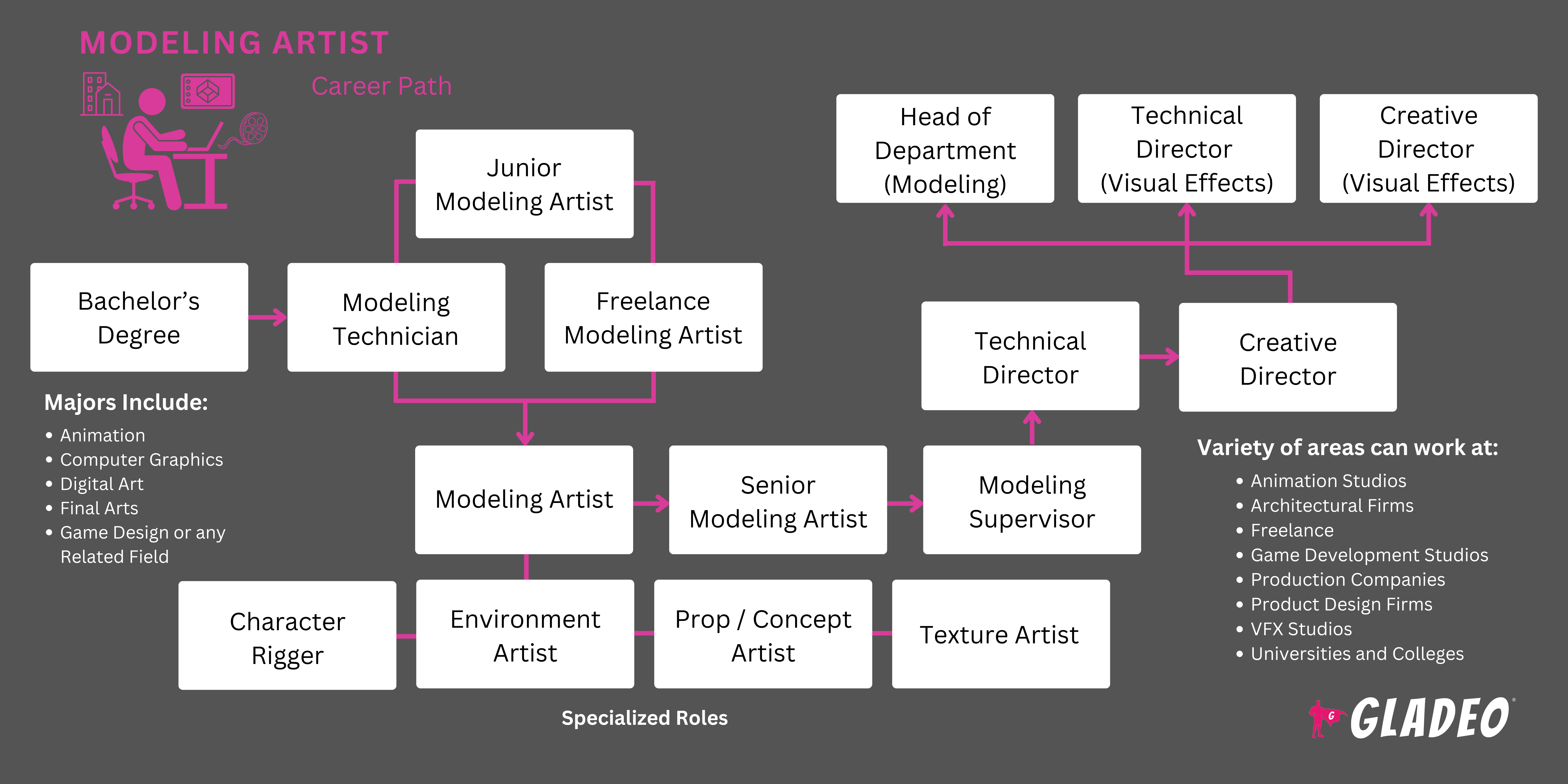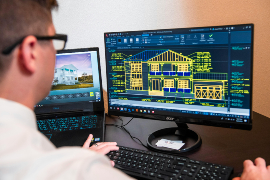Focos de atención
Modelador 3D, Artista 3D, Visualizador 3D, Escultor digital, Artista de activos de juegos, Artista de personajes, Artista de entornos, Artista de texturas, Diseñador CAD, Artista conceptual, Artista de efectos visuales (VFX), Modelador de simulación
Los artistas del modelado son las mentes creativas que están detrás de los modelos 3D utilizados en el diseño de productos, videojuegos, películas y otros sectores. Utilizando software de modelado y escultura digital, estos artistas crean contornos detallados para todo tipo de objetos, personajes, criaturas, edificios y entornos simulados.
Suelen empezar con bocetos y luego pasan por fases de desarrollo como la escultura digital, el texturizado, el sombreado y el rigging (es decir, la creación de esqueletos digitales que controlan el movimiento de un modelo 3D). En algunos casos, los artistas de modelado incluso crean prototipos físicos o modelos a escala con materiales como arcilla, madera o plástico antes de trasladar esos diseños a formatos digitales.
Una vez que los modelos digitales están listos, se pasan a los animadores o directores de proyecto. Estos miembros del equipo dan cuerpo a los diseños y se aseguran de que funcionen como es debido en cualquier medio para el que se hagan, como juegos o películas.
- Realización creativa en la fabricación de modelos que se convierten en partes de películas, juegos y otros medios de comunicación.
- Oportunidades en muchos sectores diferentes
- Reconocimiento del sector por contribuir al éxito de proyectos de gran repercusión
- Colaboración con animadores, directores y diseñadores
Horario de trabajo
Los artistas del modelado suelen trabajar a jornada completa, a menudo con horas extraordinarias necesarias para cumplir los plazos. Pueden trabajar en estudios, empresas de diseño o a distancia desde casa. Algunos trabajan como autónomos o por contrato.
Tareas típicas
- Participar en las revisiones de diseño. Aportar información sobre el desarrollo visual y las especificaciones de los modelos.
- Crear modelos 3D detallados, precisos y de alta resolución para personajes, accesorios, edificios, productos o entornos basándose en el arte conceptual y las instrucciones de diseño.
- Esculpir potencialmente modelos de superficie dura utilizando arcilla, madera u otros materiales.
- Retopologizar modelos para optimizar la animación y el rendimiento
Crear mapas UV (proyectar superficies de modelos 3D en imágenes 2D) y aplicar texturas a los modelos, garantizando una integración perfecta con otros elementos visuales. - Hornea texturas, mapas normales y oclusión ambiental para mejorar el realismo.
- Nota: en el modelado 3D, el baking es el proceso de transferir información detallada, como texturas e iluminación, de modelos complejos a otros más sencillos.
- Utilizar software estándar del sector como Maya, Blender, ZBrush y 3ds Max para esculpir, modelar y perfeccionar activos digitales.
- Colaborar estrechamente con los animadores y otros artistas para garantizar que los modelos estén listos para la siguiente fase.
- Resolución de problemas relacionados con la integración y el rendimiento del modelo
- Garantizar que los modelos se ajustan a las limitaciones técnicas, como el número de polígonos y la memoria de texturas, sin sacrificar la calidad.
- Revisar los modelos en función de los comentarios de directores, clientes o equipos de control de calidad.
- Integrar modelos en motores de juego o software de renderizado, asegurando la compatibilidad con el pipeline del proyecto.
Responsabilidades adicionales
- Crear documentación detallada para los modelos, incluidas las especificaciones técnicas y la intención artística.
- Formar y orientar a nuevos artistas
- Participar en actividades de desarrollo profesional para mantenerse al día de los avances en herramientas, tendencias y técnicas.
- Asistir a conferencias, seminarios web y talleres del sector
- Establezca contactos con profesionales del sector para compartir conocimientos y adquirir nuevas perspectivas
Habilidades blandas
- Escucha activa
- Atención al detalle
- Colaboración
- Habilidades de comunicación
- Habilidades de conceptualización
- Creatividad
- Decisividad
- Orientado al detalle
- Flexibilidad
- Paciencia
- Persistencia
- Planificación y organización
- Resolución de problemas
- Trabajo en equipo
- Gestión del tiempo
- Narración visual
Habilidades técnicas
- Herramientas de modelado 3D como Maya, Blender, ZBrush y 3ds Max
- Procesos de animación y rigging para garantizar que los modelos son funcionales y están listos para la animación.
- Comprensión general de las funciones, responsabilidades y retos de todos los departamentos críticos.
- Anatomía humana y proporciones adecuadas para el modelado de personajes
- Técnicas de optimización para diferentes plataformas con el fin de garantizar un alto rendimiento y calidad visual.
- Capacidad de gestión de proyectos
- Resolución de problemas técnicos en el proceso de modelado
- Texturizado y sombreado para crear modelos realistas o estilizados
- Agencias de publicidad
- Estudios de arquitectura
- Estudios de cine y animación
- Trabajo autónomo o independiente
- Empresas de diseño de productos
- Empresas de desarrollo de videojuegos
Los artistas de modelado deben producir modelos 3D de alta calidad que cumplan las normas artísticas y técnicas, a menudo con plazos ajustados. Esta función requiere equilibrar la creatividad con la precisión y el cumplimiento de las limitaciones técnicas.
El ritmo acelerado del sector hace que las horas extraordinarias sean habituales, sobre todo en los momentos cruciales que preceden a la finalización del proyecto. Las múltiples iteraciones y revisiones son habituales y exigen mucha paciencia, comprensión y capacidad de adaptación. Para seguir siendo competitivos, los artistas deben perfeccionar continuamente sus habilidades y mantenerse al día con las tecnologías en evolución.
Todo esto parece mucho trabajo, ¡porque lo es! Pero la recompensa es ver cómo se materializan los esfuerzos creativos y obtener el reconocimiento de la industria por las valiosas contribuciones realizadas.
El campo del modelado 3D evoluciona rápidamente, con varias tendencias clave que determinan su futuro, como el renderizado en tiempo real, que permite experiencias más interactivas y envolventes, especialmente en videojuegos y realidad virtual. Las herramientas basadas en IA y las técnicas de modelado procedimental también están agilizando el proceso de modelado, impulsando una creación más rápida y eficiente de activos complejos.
Mientras tanto, hay una creciente demanda de modelos fotorrealistas en películas y videojuegos, lo que exige que los artistas dominen técnicas avanzadas. Por último, en el diseño de productos se hace hincapié en el uso de materiales ecológicos y prácticas sostenibles, lo que afecta a la creación de modelos.
Los artistas del modelado suelen sentir pasión por el dibujo, la escultura y el arte digital desde una edad temprana. Es posible que disfrutaran creando personajes, construyendo modelos y experimentando con software 3D. Es probable que muchos participaran en clubes de arte e informática, lo que demuestra un interés temprano por el diseño visual y la tecnología.
- Convertirse en un artista del modelaje de éxito suele requerir una combinación de educación formal y experiencia práctica.
- La mayoría de los artistas de modelado tienen una licenciatura en gráficos por ordenador, arte digital, animación o un campo relacionado. Sin embargo, es posible encontrar trabajo sin titulación si se tienen suficientes aptitudes y experiencia.
- Los cursos universitarios clave incluyen:
- Modelado y animación 3D
- Diseño avanzado de personajes
- Anatomía para artistas
- Diseño y escultura de criaturas
- Escultura digital
- Modelado medioambiental
- Peluquería y peletería
- Modelado de superficies duras
- Iluminación y renderizado
- Creación de materiales y sombreadores
- Modelado de atrezo y armas
- Rigging para artistas 3D
- Texturizado y sombreado
- Técnicas de mapeado UV
- Narración visual
- También puede ser beneficioso completar cursos y certificaciones de software específicos, como:
- Considere el coste de la matrícula, los descuentos y las oportunidades de becas locales (además de la ayuda federal).
- Piense en su horario y flexibilidad a la hora de decidir si se matricula en un programa presencial, en línea o híbrido.
- Consulta los premios y logros del profesorado del programa para ver en qué películas, series, videojuegos u otros proyectos han trabajado.
- Fíjese bien en las instalaciones de la escuela y en los programas informáticos con los que se forman los alumnos.
- Consulte las estadísticas de inserción laboral de los graduados y los detalles sobre la red de antiguos alumnos del programa.
- Cursos básicos de arte, ilustración, diseño gráfico e informática
- Desarrollar habilidades básicas que son esenciales para el modelado 3D, incluyendo dibujo, arte digital y codificación.
- Empieza a aprender software de modelado 3D mediante el autoaprendizaje y la práctica en casa. Explora herramientas como Maya, Blender y ZBrush.
Utiliza tutoriales en línea, libros y cursos de vídeo para desarrollar tus habilidades. - Cree una cartera en línea en la que muestre su trabajo, incluidos modelos 3D, esculturas digitales y animaciones. Esto es crucial para demostrar tus habilidades a posibles empleadores o clientes.
- Realizar prácticas o trabajos a tiempo parcial para adquirir experiencia práctica y conocer el sector.
- Considere la posibilidad de trabajar como autónomo para ampliar su red de contactos al tiempo que gana dinero.
Trabajar en pequeños proyectos puede aportarte experiencia real y ayudarte a ampliar tus contactos profesionales. - Mantente informado sobre las tendencias en modelado 3D y arte digital leyendo artículos y viendo vídeos.
- Busque mentores. Únase a comunidades en línea y asista a eventos del sector, cuando sea posible.
- Únase a organizaciones como la Asociación Internacional de Desarrolladores de Juegos

- Cree una cartera con sus mejores modelos 3D, esculturas digitales y renders. Demuestra tus habilidades en diferentes programas de modelado.
- Busca trabajos para principiantes, prácticas y oportunidades para autónomos en plataformas como ArtStation, CreativeHeads, Indeed, Upwork y sitios web de empresas específicas.
- Preste atención a los requisitos y a las palabras clave. Incorpora a tu currículum palabras clave de las ofertas de empleo, como:
- Modelado 3D
- Animación
- Visión artística
- Diseño de personajes
- Escultura digital
- Iluminación
- Presentación
- Texturización
- Cartografía UV
- Efectos visuales (VFX)
- Revisar ejemplos de plantillas de curriculum vitae de Modeling Artist
- Consulta las preguntas habituales en las entrevistas. Practica respondiendo a preguntas como "¿Cómo abordas el modelado de un personaje complejo?" o "Describe tu proceso de creación de texturas detalladas".
- Relaciónese con otros artistas 3D, animadores y profesionales del sector en conferencias como SIGGRAPH y a través de foros en línea.
- Considera la posibilidad de trabajar como autónomo en plataformas como Upwork o Fiverr para adquirir experiencia y construir tu cartera mientras buscas puestos a tiempo completo.
- Estar dispuesto a trasladarse a ciudades donde haya más estudios de animación y videojuegos.
- Vístete para triunfar en la entrevista
- Hable con su supervisor sobre las oportunidades de promoción. Pregunte qué puede estudiar que pueda beneficiar a su empresa.
- Considera la posibilidad de realizar un máster o de buscar formación adicional y certificaciones para mejorar tus habilidades, como el dominio de Photoshop, 3ds Max, Maya, Blender, ZBrush, Unreal Engine, etc.
- Desarrollar una presencia en línea para comercializar su trabajo y atraer a nuevos clientes
- Participar en las principales conferencias y exposiciones del sector para darse a conocer.
- Establecer contactos con directores, animadores y otros artistas
- Intenta trabajar en proyectos variados para adquirir una amplia experiencia.
- Únase a organizaciones profesionales como la Asociación Internacional de Desarrolladores de Juegos.
- Si está preparado para el reto, considere la posibilidad de poner en marcha su propia pequeña empresa o LLC. Algunos pasos importantes que debes dar son:
- Obtención de las certificaciones y licencias necesarias en su estado Determinación de la estructura de su empresa (por ejemplo, empresa unipersonal, LLC)
- Registrar el nombre de su empresa
- Creación de un plan de negocio y desarrollo de una estructura de precios
- Crear una cuenta bancaria y un sistema contable para la empresa
- Contratar un seguro de responsabilidad civil profesional
- Crear un sitio web profesional y comercializar sus servicios
- Captación de clientes y establecimiento de contratos o acuerdos
Páginas web
- Revista 3D Artist
- 3ds Max
- 3total
- ACM SIGGRAPH
- Gremio de animación
- Blog de Animation Mentor
- ArtStation
- Autodesk Maya
- Blender
- BlenderNation
- Canal CG
- Domestika
- DeviantArt
- Taller Gnomon
- Houdini
- Bolsa de herramientas Marmoset
- Maravilloso diseñador
- Polycount
- Revista Renderosity
- Sociedad de Ilustradores
- Sustancia de Adobe
- Pintor de sustancias
- El blog de Foundry
- Asociación Internacional de Desarrolladores de Juegos
- Los novatos
- Sociedad de Efectos Visuales
- Unidad
- Motor Unreal
- ZBrush
Libros
- Artista 3D: The Ultimate Guide to 3D Art and Design, de Imagine Publishing
- Anatomía para artistas 3D: The Essential Guide for CG Professionals, por Chris Legaspi y 3dtotal Publishing
- Blender para Dummies, por Jason van Gumster
- Modelado digital, por William Vaughan
- Introducción a ZBrush: An Intro to Digital Sculpting and Illustration, por Gregory Johnson
- Consejos y técnicas profesionales de Maya, por Lee Lanier
- El arte de la animación y los efectos 3D por ordenador, por Isaac V. Kerlow
- Creación de personajes con ZBrush: Escultura digital avanzada, por Scott Spencer
En general, se espera que las perspectivas laborales de los artistas del modelaje crezcan más rápido que la media de todas las ocupaciones. Pero la competencia por estos puestos también podría intensificarse. Si quieres explorar algunas salidas profesionales relacionadas, consulta nuestra lista a continuación:
- Artista de entornos 3D
- Animador
- Arquitecto
- Artista de visualización arquitectónica
- Director de Arte
- Programador CAM
- Diseñador de personajes
- Artista conceptual
- Escultor digital
- Director de Fotografía
- Consultor de simulación electrónica
- Diseñador de muebles
- Diseñador de juegos
- Diseñador gráfico
- Ilustrador
- Diseñador industrial
- Artista de la iluminación
- Creador de modelos
- Diseñador de gráficos animados
- Diseñador de productos
- Diseñador de atrezo
- Escenógrafo
- Artista de Storyboard
- Artista técnico
- Artista de texturas
- Director de TV
- Diseñador UI/UX
- Artista de efectos visuales (VFX)
- Supervisor de VFX
Newsfeed

Trabajos destacados

Cursos y herramientas en línea








